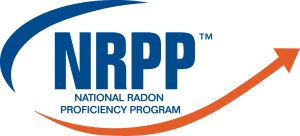
Advanced Radon Design & Install
Cardinalbama is recognized for its superior radon system designs, offering Georgia businesses customized solutions built on years of expertise and advanced know-how. Our systems are tailored to provide optimal mitigation with measurable results.
Our radon design/install services include:
- Compliant sub-slab ventilation systems
- High-quality sealed vapor barriers
- Tailored solutions for all building types
- Active monitoring capabilities
- Cost-efficient engineering
- Reliable post-install support
Custom Solutions for Maximum Safety
Cardinalbama employs a strategic, detailed design process to ensure that each radon mitigation system is customized for effectiveness, reliability, and ease of integration into your building structure.
- Comprehensive evaluation of building structure
- Customized design based on specific requirements
- Integration of latest radon mitigation technologies
- Seamless system setup for immediate benefits
- Full compliance with health and safety regulations

Our Process
Discover our streamlined process for radon system design and installation, ensuring compliance, efficiency, and reliability.
Consultation
We engage with your team to understand project needs and provide expert recommendations.
Design
Our experts craft a customized radon mitigation plan tailored to your building’s specifications.
Installation
We implement the design with high-quality materials and meticulous attention to detail.
Monitoring
Post-install tests ensure system effectiveness, with options for ongoing monitoring.
Who We Serve
Our comprehensive commercial radon services are tailored to meet the unique needs of diverse industries, ensuring safety and compliance in every environment.
Property managers
We help properties including Apartment complexes, Medical facilities, Warehouse, Municipal buildings and more.
General contractors
Enhance property value and safety from the ground up on new construction properties for future occupants.
Multifamily
housing
Incorporate radon-resistant features in multi-family housing for future-proof health and safety of occupants.
Frequently Asked Questions About Radon Design and Install
Here are our most frequently asked questions, but feel free to reach out if you have any others.
Our Proven Success in Radon Mitigation
Cardinalbama is unmatched in our dedication to achieving best-in-class radon mitigation results for every client, consistently turning challenges into opportunities for safe and healthy living.
Success Rate
Our radon mitigation systems guarantee success with every installation, maintaining optimal safety standards and unparalleled efficiency.
Guaranteed Safety Levels
We guarantee radon levels below 4.0 pCi/L, ensuring you a safer environment with every installation.
Years of Experience
With over 30 years of professional experience, Cardinalbama is trusted for our expert radon mitigation services across the region.
Our Certifications
Cardinalbama is proudly certified by the industry’s leading organizations, reflecting our commitment to quality, safety, and professionalism. Our credentials ensure that we meet the highest standards for radon mitigation and testing services.





Resources About Radon Mitigation
Explore our collection of expert guides, articles, and resources designed to provide insightful information on radon mitigation and safety for commercial properties.
"*" indicates required fields
Your Trusted Partner in Radon Mitigation
Discover the unparalleled expertise and commitment we deliver, ensuring every radon mitigation project meets your unique needs.



